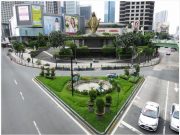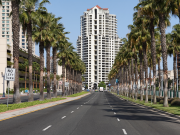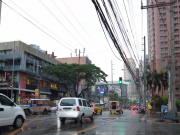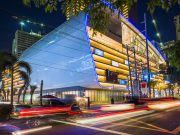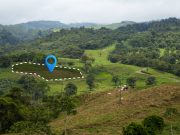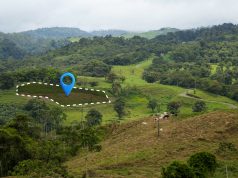Economic zones are popular among real estate investors for their unique advantages over conventional investments. These include reduced taxes, improved infrastructure, and favorable regulations. This article will explore the merits and risks of investing in economic zones.
The economic landscape of the Philippines is continuously evolving with the rise of manufacturing and agro-industrial economic zones, information technology and medical tourism parks/centers, and tourism export enterprises across industries.
As of April 2023, the country boasts 78 manufacturing economic zones that offer job creation opportunities while promoting industrial and technological growth. The 297 information technology parks/centers support innovation and technology advancement in the IT industry. In contrast, the 17 tourism export enterprises create employment while contributing to foreign exchange earnings. The agro-industrial economic zones, of which there are 24, boost food security and export growth while promoting value addition, and the three medical tourism parks/centers stimulate the healthcare sector and generate revenue.
With real estate investors targeting these zones due to their potential for increased demand and rising property values, investors must thoroughly evaluate the opportunities and risks associated with each type of economic zone.
What Economic Zones Are All About
An economic zone is a region or area designated by a government for development that offers incentives such as tax breaks or other financial incentives to encourage businesses to invest in the area. These economic zones are often known as Special Economic Zones (SEZ) and Free Trade Zones (FTZ). The primary goal of these economic zones is to attract foreign investment, create jobs, and promote economic growth in a local area. To do so, they offer incentives such as tax breaks and other financial benefits for businesses that invest within the zone.
Types of economic zones
Economic zones cater to various industries, providing enticing benefits such as tax advantages, access to skilled labor, and robust infrastructure support. These specialized zones, catering to manufacturing, technology, or financial services, serve as magnets for businesses seeking opportunities to foster growth and achieve success. It’s worth noting that there are different types of economic zones, each with its distinct characteristics and advantages.
- Free ports and special economic zones
- Agro-industrial economic zones
- Manufacturing economic zones
- IT parks/centers
- Medical tourism parks/centers
- Tourism economic zone
The Benefits of Investing in Economic Zones
Investors can take advantage of the numerous benefits of investing in economic zones, such as lower tax rates, improved infrastructure, and more attractive regulations.
1. Incentives
Tax incentives are a powerful magnet for foreign investors. With reduced taxes on investments in designated economic zones, these lucrative opportunities attract real estate investors with a promise of optimal returns.
2. Improved Infrastructure
Furthermore, these economic zones typically feature improved infrastructure that benefits businesses. It includes improved transportation networks, reliable power supply, and modern telecommunications systems.
3. Favorable Regulations
In addition, the regulations for investments in economic zones are often more favorable than those of traditional investments. In some cases, investors may be exempt from certain taxes or allowed to repatriate their profits with fewer restrictions.
Economic Zones and Real Estate
Economic zones have become highly attractive for the real estate industry due to their ability to boost infrastructure and property values. Top investors are flocking to these zones to benefit from reduced taxes and maximize their returns. However, risks are involved, such as changing regulations and increased competition. Nevertheless, economic zones continue to draw real estate investors. With the potential for substantial returns, it’s no surprise that economic zones have become a preferred destination for savvy investors.
PEZA Advantages
If you’re considering setting up a business in a PEZA (Philippine Economic Zone Authority) zone, you can look forward to a range of advantages that can significantly benefit your operations. Here’s a closer look at the PEZA advantage:
1. More Savings
Economic zones in the Philippines provide various tax incentives that can result in significant cost savings for your business, including income tax holidays, reduced corporate income tax rates, and exemptions from local government taxes and fees. These savings can enhance your profitability and enable you to reinvest in your business.
2. One-Stop Shop
PEZA provides an efficient one-stop shop for registration and compliance requirements. This straightforward process makes setting up your business easy in an economic zone in the Philippines. It minimizes administrative hassles and saves you precious time and effort.
3. Corruption-Free
PEZA is committed to transparency and integrity, providing a business environment free from graft and corruption. Confidently operating with ethical standards, ensuring a secure and stable business environment.
4. Less Paperwork
These zones reduce bureaucratic red tape and paperwork, allowing you to concentrate on your core business activities instead of being overwhelmed by administrative tasks, resulting in efficiency.
5. After-Service
PEZA continues to support your business after setting up. They offer ongoing support services to help with any challenges or questions you may have during your operations. This commitment to post-service guarantees the resources you need for success.
PEZA offers substantial advantages for businesses in the Philippines. Tax incentives, efficient registration, transparency, reduced paperwork, and ongoing support create an attractive environment. PEZA zones are ideal for business establishments seeking a competitive edge and cost savings in the Philippines.
PEZA-accredited Buildings in Central Business District
1. Makati City
Makati City’s commercial district is the core of Philippine business operations. From startups to multinational corporations, it drives the country’s economic growth. Makati serves international trade, finance, and investments as the central link to global finance. The city’s business district accounts for more than 60% of Metro Manila’s premier office space inventory, showing how significant Makati is in the country’s economy. Makati’s leadership has been tackling boosting its role as a leading central business district in Metro Manila while ensuring its residents enjoy the benefits and contribute to these developments’ responsibilities.
The Makati Central Business District (CBD) is an important hub and the focal point of commerce in the National Capital Region (NCR). For businesses seeking office towers or serviced office spaces, Makati CBD offers plenty of options. Makati City boasts more than 70 PEZA-accredited buildings, including these notable structures:
| 1. | [24]7 Plaza |
| 2. | 6750 Ayala Avenue Building |
| 3. | 6780 Ayala |
| 4. | 6788 Ayala Avenue Building |
| 5. | Ayala Triangle Tower 2 |
| 6. | BA Lepanto Building |
| 7. | BPI Buendia Center |
| 8. | Convergys IT Building |
| 9. | ePLDT Ventus Jupiter Building |
| 10. | GT Tower International |
| 11. | Glorietta 1 BPO |
| 12. | Glorietta 2 BPO |
| 13. | Glorietta 5 |
| 14. | Goodland I.T. Center |
| 15. | Insular Life Building |
| 16. | Libran House IT Center |
| 17. | Makati Gateway |
| 18. | Maria Cornelia IT Center |
| 19. | MSE Center |
| 20. | Multinational Bancorporation Centre |
| 21. | NEX Tower |
| 22. | One Ayala Avenue |
| 23. | Pacific Star Building |
| 24. | PBCom Tower |
| 25. | PeopleSupport Center IT Building |
| 26. | Philamlife IT Tower |
| 27. | Philcom Building |
| 28. | RCBC Plaza |
| 29. | Robinsons Summit Center (formerly JG Summit Center) |
| 30. | SGV Building |
| 31. | SLC Building |
| 32. | Solaris One (formerly Dela Rosa E-Services Building) |
| 33. | The Enterprise Center, Tower 1 & Tower 2 |
| 34. | The Paseo Center IT Building |
| 35. | The Peak Tower |
| 36. | Tower 6789 |
| 37. | Trafalgar Plaza |
| 38. | V-Corporate Centre |
| 39. | Zuellig Building |
2. Makati Submarket
The Makati Submarket consists of the areas outside the Makati Central Business District, including Rockwell Center, Century City, and Circuit Makati, with several PEZA-accredited establishments.
| 40. | 2251 IT Hub (formerly Wilcon IT Hub) |
| 41. | 8 Rockwell |
| 42. | Allegro Center |
| 43. | Alphaland Southgate Towers |
| 44. | Alsons PTX Office Building |
| 45. | Burgundy Corporate Tower |
| 46. | Centuria Medical Makati |
| 47. | Century City |
| 48. | Circuit Corporate Center One |
| 49. | Circuit Corporate Center Two |
| 50. | Döhle Haus Manila |
| 51. | DPC Place Building |
| 52. | ECO Plaza |
| 53. | ePLDT VITRO Makati Data Center |
| 54. | eWest Pod |
| 55. | Exportbank Plaza Building |
| 56. | First Maritime Place |
| 57. | Forbes Media Tower |
| 58. | Gomez Office Building |
| 59. | Green Sun (formerly Solid House) |
| 60. | Jazz IT Center |
| 61. | JB Building |
| 62. | King’s Court IT Center |
| 63. | Marvin Plaza Building |
| 64. | McKinley Exchange Corporate Center |
| 65. | MJ Corporate Plaza |
| 66. | MK2 Data Center |
| 67. | 100 West Offices |
| 68. | SM Makati Cyberzone 2 Building |
| 69. | SM Makati Cyberzone Building |
| 70. | TC Realty Corp. – IT Makati Bldg |
| 71. | TechZone Building |
These Makati buildings offer high-quality facilities and amenities that meet the needs of modern businesses. However, the options for PEZA-accredited locations extend beyond Makati City.
The commercial district of Taguig City, including Fort Bonifacio Global City, Northgate Cyberzone in Muntinlupa commercial district, and Laguna, offers a variety of prestigious PEZA-accredited locations. These developments have multiple benefits, including convenient access to shopping areas and residential neighborhoods. As a result, businesses in Metro Manila and nearby provinces have an abundance of options when it comes to PEZA-accredited buildings.
Questions to Consider When Investing in Economic Zones
When investing in economic zones, investors should consider the following questions:
- What type of incentives are offered by the economic zone?
- Are there any restrictions or regulations governing investments within the economic zones?
- How stable are the local economy and political environment?
- Is infrastructure adequate and access to resources within the area?
- How liquid are the investments in this region?
- What are the expected returns on investment within the economic zone?
Investors can effectively evaluate opportunities and risks by considering the following questions when assessing economic zones. This strategic approach enables them to make wise choices that drive success and align with their business goals.
Final Thoughts
Economic zones have a significant impact on real estate investments. They provide investors with attractive incentives such as reduced taxes and improved infrastructure, offering an excellent opportunity for success. However, thorough research and understanding of risks are crucial before committing funds. Considering financial goals, risk tolerance, and the local economy is essential for informed decisions. A contingency plan helps mitigate related risks. Economic zones offer lucrative returns and remarkable growth prospects for real estate investments.




